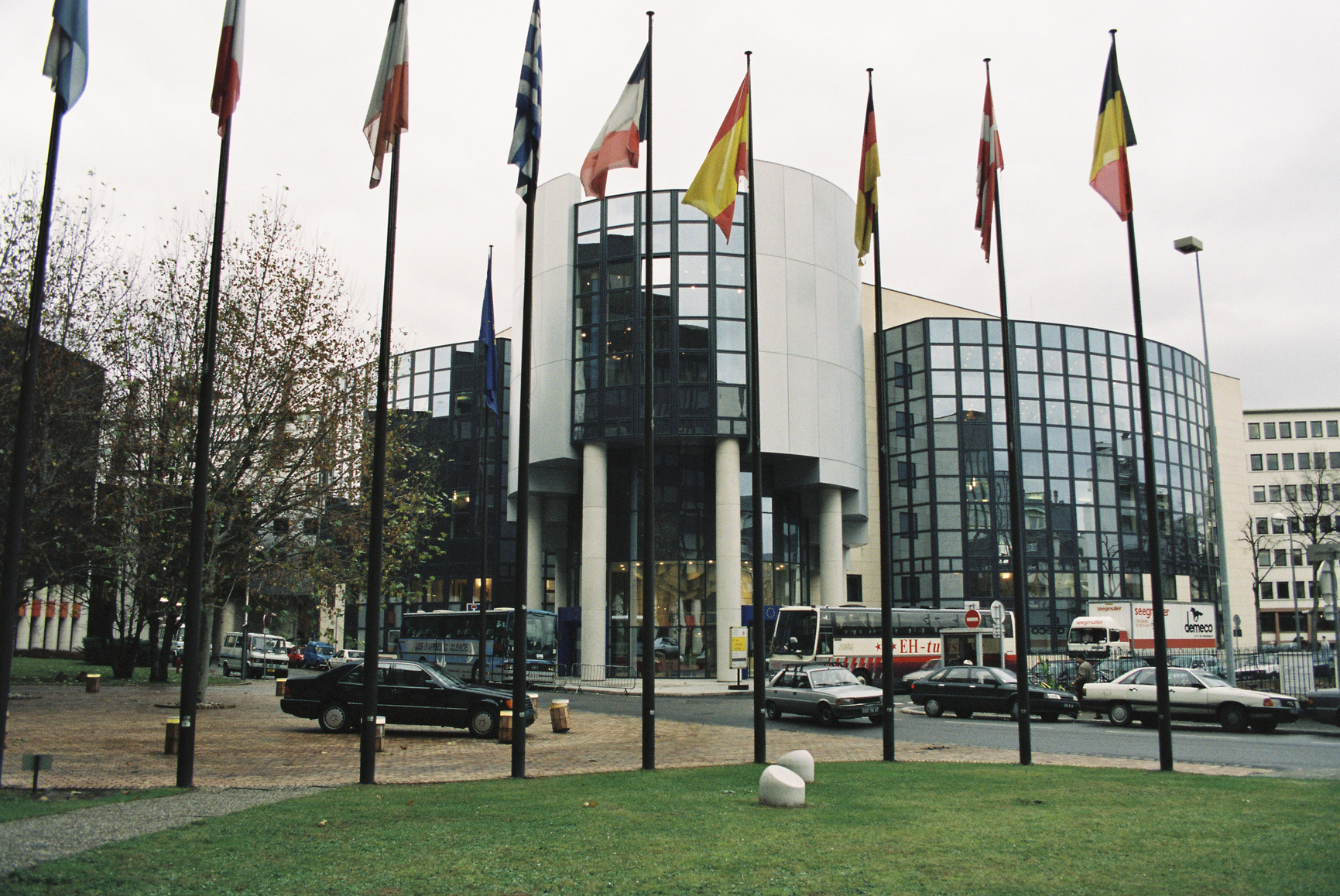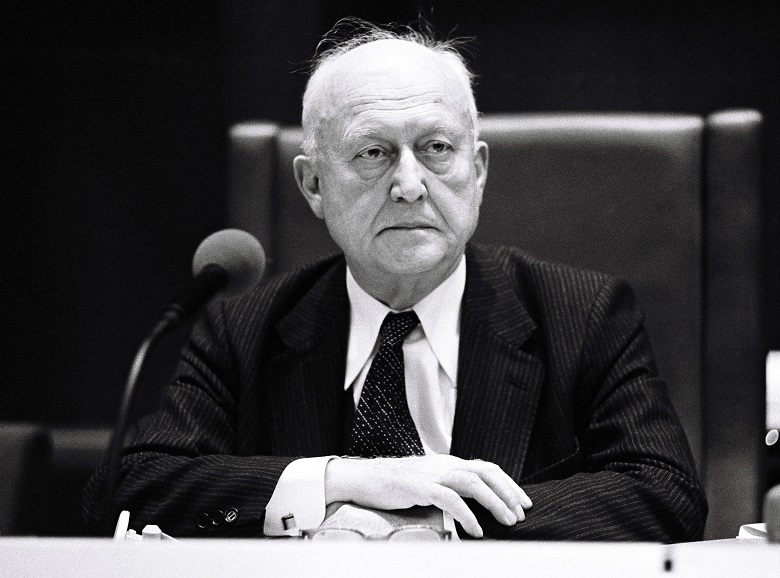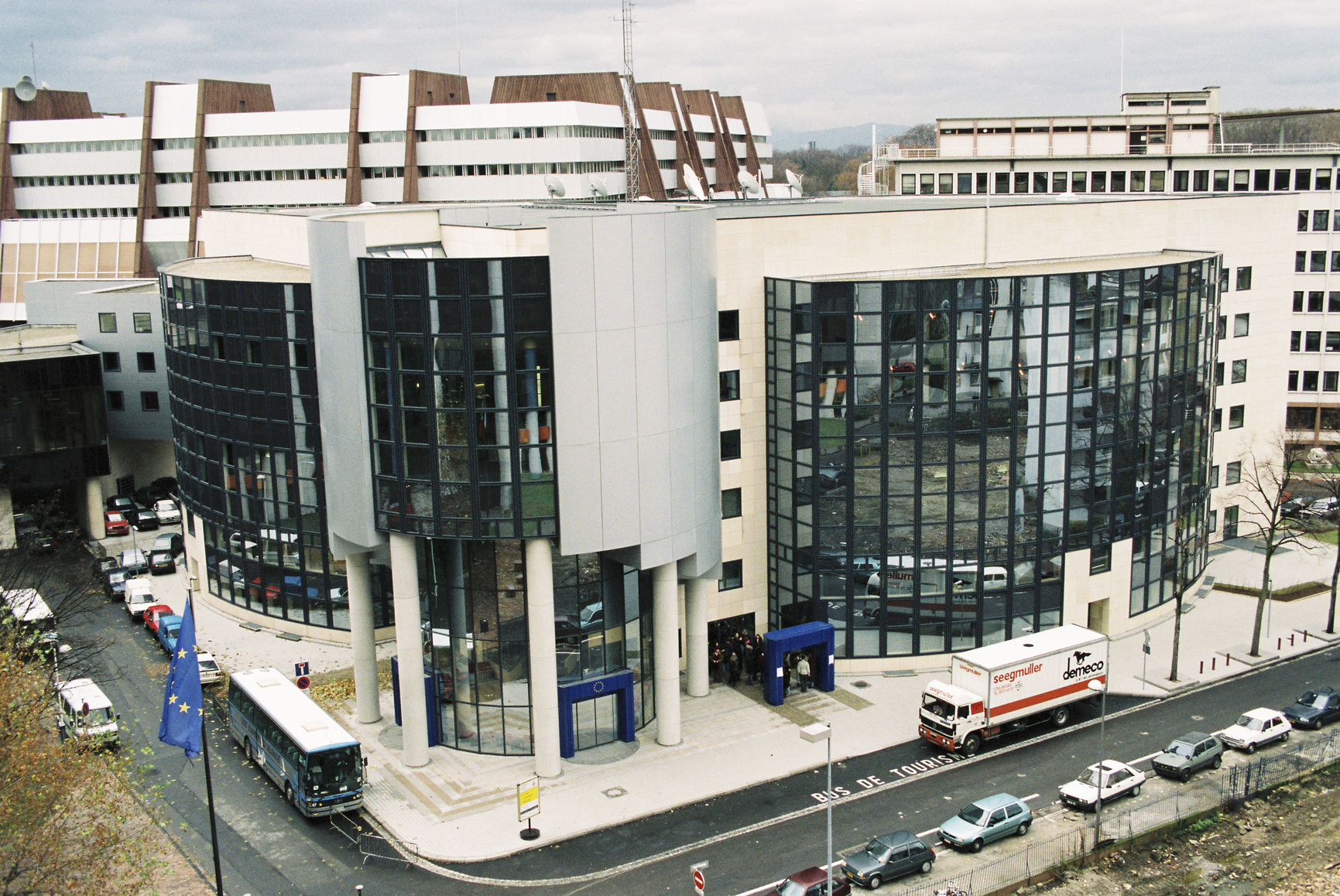 Outside view of the Pflimlin building in Strasbourg © European Communities 1992 – European Parliament
Outside view of the Pflimlin building in Strasbourg © European Communities 1992 – European Parliament
Active in the construction of Europe and President of the EP
His name may not be the easiest to pronounce, but it was on the lips of many people for a long time, so impressive was Pierre Pflimlin’s career. He was born in Roubaix in 1907 into a Christian-Democrat family from the Alsace. After obtaining a degree in law and political science from the University of Strasbourg, he was called to the bar in Strasbourg in 1933, the very city which would, in 1992, become home to a European Parliament building bearing his name.
Well-cemented Alsatian origins
French by nationality and of Alsatian stock, Pierre Pflimlin was convinced of the importance of Franco-German entente for the construction of Europe. His European vocation found its voice in 1947 when, following the war, he was Minister of Agriculture in the government of Robert Schuman. He attempted to create a European organisation of agricultural markets, better known as the ‘green pool’. But a lack of political support meant that the project faltered.
Pflimlin’s pro-Europe activity came to the fore in 1959 with his election by France’s National Assembly, on a proposal by the Popular Republican Movement (MRP), as its representative in the Consultative Assembly of the Council of Europe. He was President of the Assembly from 1963 to 1966, and in 1962 he was appointed by the National Assembly to represent France at the European Parliament until 1967.
Pierre Pflimlin also devoted himself to regional politics in a city which was dear to him: Strasbourg. Pflimlin was Mayor of Strasbourg from 1959 to 1983.
 MEP Pierre Pflimlin during a session in Strasbourg in March 1981 © European Union 1981 – European Parliament
MEP Pierre Pflimlin during a session in Strasbourg in March 1981 © European Union 1981 – European Parliament
President of the European Parliament
Pflimlin returned to the European Parliament in 1979 following the first direct elections. He was Vice-President from 1979 to 1984, and became its President from 1984 to 1987. He remained a Member of the European Parliament until 1989, when he withdrew completely from political life.
His time in office was marked by major events such as the accession of Spain and Portugal to the European Community, but he also attached particular importance to interinstitutional relations. He wanted to focus on improving dialogue with the Council, which was facing internal conflicts centred on the thorny issue of the budget. As soon as he was elected to lead the EP, he tried to push through an additional budget to obtain sufficient resources to finance priority Community measures such as agricultural policy, and he was quick to revive his past commitments as French Minister of Agriculture.
At the Milan European Council in 1985, Pflimlin tried to have the idea of a treaty launching institutional reform via an intergovernmental conference accepted. In this context he put forward the notion of increasing the powers of the EP. But this was unsuccessful, and his disappointment with the ‘Single Act’ – the EU was paralysed by the impossibility of taking unanimous decisions – led to his absence from the final signature. ‘More Europe, yes – but we are still a long way from supranational Europe’ was how the media of the day put it.
Without abandoning his convictions about the role of the European Parliament, Pflimlin made sure that he never stood in the way of the proper functioning of the European Community. He passed away in June 2000 at the age of 93.
 Outside view of the Pflimlin building in Strasbourg © European Communities 1992 – European Parliament
Outside view of the Pflimlin building in Strasbourg © European Communities 1992 – European Parliament